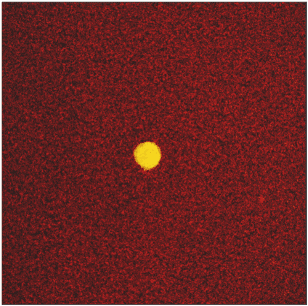Scientists Develop New Synthetic Hydrogel to Understand Cell-Matrix Interactions
Date:11-04-2023 | 【Print】 【close】
Recently, an international research team from Shenzhen Institute of Advanced Technology (SIAT), Chinese Academy of Sciences (CAS), Radboud University and KU Leuven used a synthetic, yet highly biomimetic hydrogel based on polyisocyanide (PIC) polymers to investigate the effects of the fibrous architecture and the nonlinear mechanics on cell–matrix interactions.
Their findings were published on 3 April in PNAS.
The synthetic PIC gel, discovered in 2013 by Prof. Paul Kouwer from Radboud University, appears to behave like collagen. This makes the gel very useful for studying interactions between cells and their immediate environment. In practice, this means that the gel seems highly suitable to grow cells in for biological and clinical research. An additional advantage is that unlike the gels commonly used for cell culture, this gel requires no breeding and killing of mice.
Cells are heavily influenced by their immediate surroundings, and the interactions between cells and their matrix play a critical role in cell fate. However, this complex web of biochemical and mechanical contributions is still poorly understood. The lack of controllable matrices and quantitative analysis techniques has hampered progress in this field.
To address this issue, this international team used a highly biomimetic synthetic fibrous hydrogel to study and tailor the bidirectional cell–matrix interactions. Using advanced microscopy-based approaches, they acquire a comprehensive picture of how cellular tractions, fiber remodeling, matrix properties, and cellular behavior interact. Complete mapping of cell–matrix interactions at the cellular length scale provides indispensable information for a rational design of better biomimetic materials.
This study represents a significant advancement in the field of biomimetic materials. By developing a highly controllable synthetic fibrous hydrogel and mapping cell-matrix interactions, they have laid the foundation for future research and the development of better biomimetic materials.
In addition, the study highlights the importance of interdisciplinary collaboration in scientific research. By working together, researchers from different fields were able to develop a novel approach to studying cell-matrix interactions. This collaborative effort is crucial for making progress in complex fields such as tissue engineering and regenerative medicine.
Overall, this research represents an exciting development in the field of biomimetic materials. This work provides a roadmap for future research in this area and could have significant implications for the development of new therapies for various diseases and injuries.

Video 1. A spreading stem cell remodels its surrounding matrix in 3D. Green: cell; Red: PIC hydrogel. (Video by Dr. LIU, Kaizheng)
Media Contact:
ZHANG Xiaomin
Email:xm.zhang@siat.ac.cn